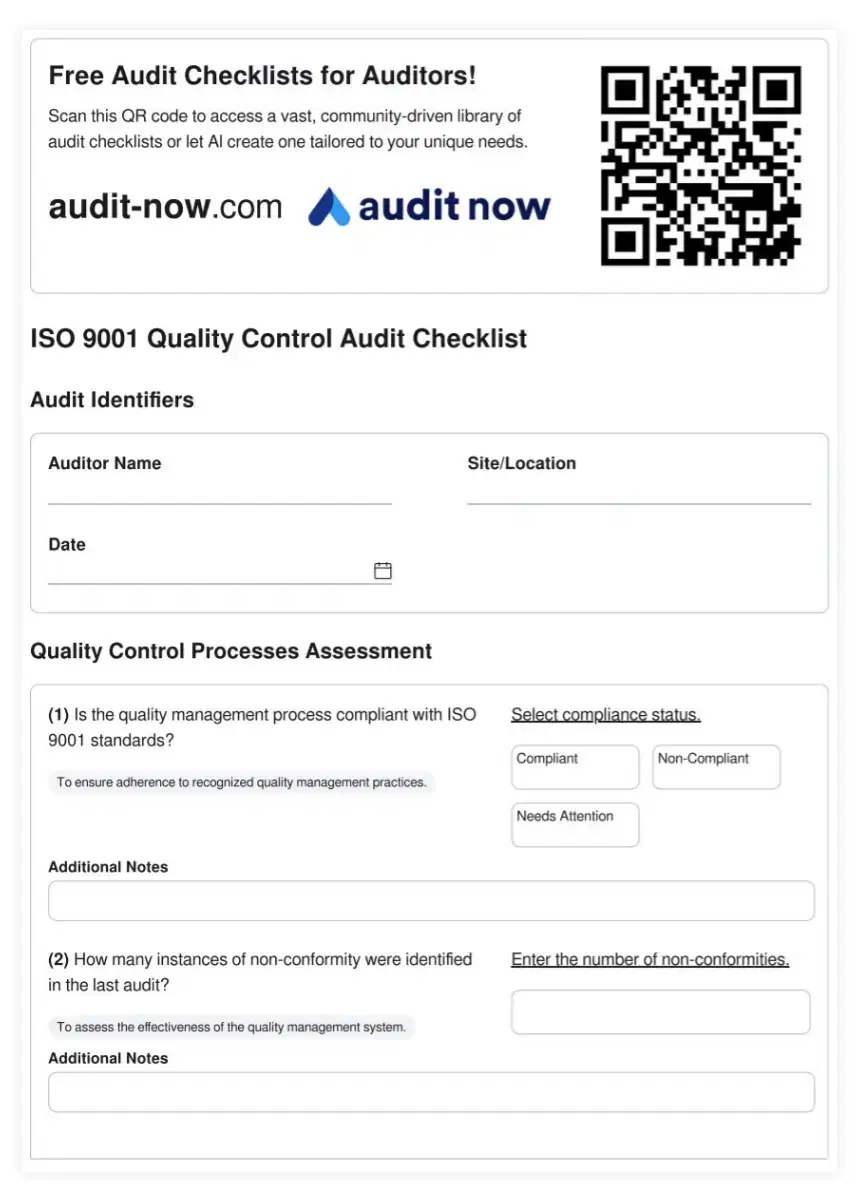Regulatory Affairs Manager Checklists

Featured Checklist

REACH Authorization and Restriction Compliance Audit Checklist
The REACH Authorization and Restriction Compliance Audit Checklist is a crucial tool for companies dealing with substances of very high concern (SVHCs) and restricted substances under the REACH regulation. This checklist focuses on the complex processes of authorization applications and restriction compliance, helping businesses navigate these critical aspects of REACH. By systematically reviewing authorization requirements and restriction conditions, companies can ensure regulatory compliance, mitigate risks associated with hazardous substances, and demonstrate their commitment to safer chemical use and environmental protection.
Regulatory Affairs Manager Operational Overview
Regulatory Affairs Managers face a complex landscape of ever-changing rules and standards. Keeping up with global regulations, managing product submissions, and ensuring compliance across multiple markets can be overwhelming. These challenges directly impact a company's ability to bring products to market quickly and maintain a competitive edge.
Effective regulatory affairs management is crucial for maintaining product quality and safety. It's not just about following rules; it's about building a culture of compliance that protects consumers and upholds the company's reputation. When regulatory affairs run smoothly, it paves the way for innovation and growth.
To navigate these challenges, many Regulatory Affairs Managers turn to robust auditing processes. Let's explore why audits are so important in this field.
Core Audit Requirements & Checklist Importance
Audits in regulatory affairs are more than just a box-ticking exercise. They're a vital tool for ensuring compliance, identifying risks, and driving continuous improvement. A well-structured audit covers documentation practices, submission processes, and regulatory intelligence gathering. It also examines how well the regulatory team communicates with other departments and external agencies.
Systematic checklists play a crucial role in these audits. They provide a clear roadmap for what needs to be reviewed, ensuring nothing falls through the cracks. Checklists help standardize the audit process, making it easier to compare results over time and across different products or markets.
Compliance requirements in regulatory affairs are stringent and varied. They may include adherence to Good Clinical Practices (GCP), Good Manufacturing Practices (GMP), and specific regional regulations like FDA guidelines or EU directives. A comprehensive audit checklist helps ensure all these bases are covered.
- Document Control: Ensure all regulatory documents are up-to-date and properly managed
- Submission Tracking: Review the system for monitoring regulatory submissions and approvals
- Training Records: Verify that staff are trained on current regulations and procedures
- Change Management: Assess how regulatory changes are identified, communicated, and implemented
- Vendor Oversight: Evaluate management of external regulatory affairs service providers
Navigating Industry-Specific Challenges
Regulatory Affairs Managers in different industries face unique challenges. In pharmaceuticals, for instance, the focus might be on clinical trial regulations and drug safety reporting. Medical device regulatory professionals grapple with unique device identifiers and post-market surveillance requirements. Food and cosmetics regulatory experts deal with labeling regulations and ingredient safety assessments.
Best practices often involve creating a regulatory strategy early in product development. This proactive approach helps anticipate hurdles and streamline the approval process. Another key practice is maintaining open lines of communication with regulatory agencies, fostering a collaborative relationship that can smooth the path to compliance.
Quality control in regulatory affairs often involves implementing electronic document management systems, conducting regular internal audits, and establishing clear standard operating procedures (SOPs) for regulatory activities. These measures help ensure consistency and reduce the risk of non-compliance.
Optimizing Regulatory Affairs Processes
Process optimization in regulatory affairs can significantly impact a company's bottom line. One effective approach is to implement a stage-gate process for regulatory submissions. This involves setting clear milestones and review points throughout the submission preparation, reducing the risk of last-minute issues or delays.
Risk management is another critical area. Regulatory Affairs Managers often use tools like risk assessment matrices to prioritize regulatory activities and allocate resources effectively. For example, a high-risk product in a strictly regulated market might receive more attention than a low-risk product in a less regulated environment.
Performance metrics in regulatory affairs might include submission success rates, approval timelines, and the number of regulatory queries received. By tracking these metrics, managers can identify areas for improvement and demonstrate the value of the regulatory affairs function to the broader organization.
Join Thousands of Satisfied Users
Become part of a community that makes compliance simple and effective
Try now!
Digital Transformation with Audit Now
In today's fast-paced regulatory environment, digital tools are becoming indispensable. Audit Now offers AI-powered checklists that can adapt to your specific regulatory needs. These smart checklists learn from your audit history, suggesting improvements and highlighting potential risk areas. With real-time collaboration features, your entire regulatory team can work together seamlessly, even when spread across different locations.
Audit Now's extensive template library covers a wide range of regulatory affairs scenarios. Whether you're preparing for a regulatory inspection, conducting an internal audit, or setting up a new compliance process, you'll find a template to get you started quickly. Plus, with the AI checklist generator, you can create custom checklists tailored to your unique regulatory challenges.
Ready to transform your regulatory affairs audits? Visit audit-now.com/templates/ to explore our comprehensive template library. And don't forget to try our AI checklist generator at audit-now.com/generate-ai-checklist/ to create custom checklists for your specific needs.